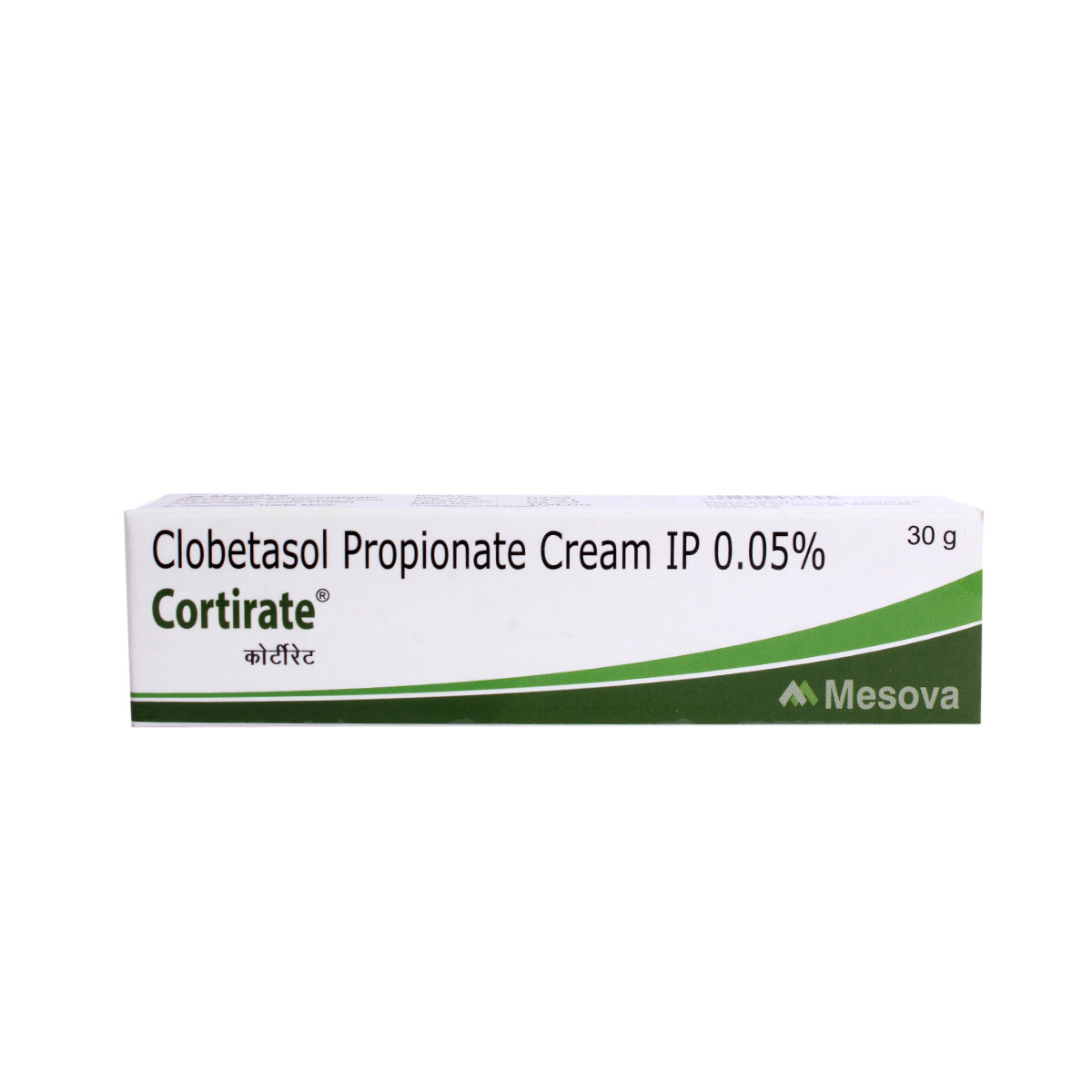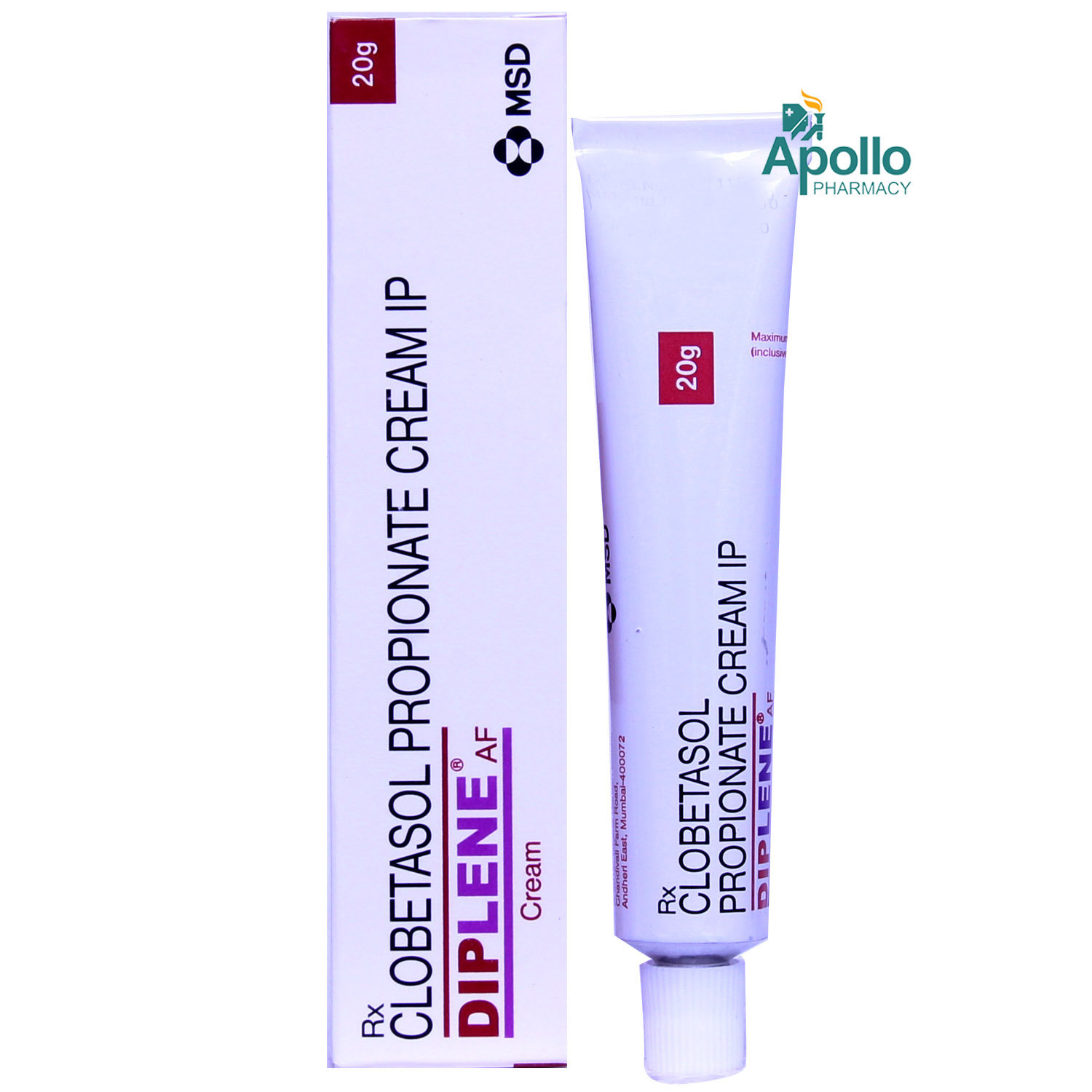- Home
- Clobagic Cream
Clobagic Cream Substitute
Clobagic Cream Substitute
Medicine Composition:
CLOBETASOL PROPIONATE-0.05%W/WAll Substitutes & Brand Comparisons
RX
Terabet Cream 20 gm
Leeford Healthcare Ltd
₹58
(₹2.61/ 1gm)
39% CHEAPERRX
Clorip Cream 30 gm
Glasier Wellness Inc
₹98
(₹2.94/ 1gm)
31% CHEAPERRX
Lamovate 0.05% Cream 30 gm
Servocare Lifesciences Pvt Ltd
₹107.5
(₹3.23/ 1gm)
24% CHEAPERRX
Tufgain Cream 30 gm
Life Gain Pharma Company
₹99
(₹3.3/ 1gm)
22% CHEAPERRX
Cortirate Cream 30gm
₹123.5
(₹3.71/ 1gm)
13% CHEAPERRX
Psovate 0.05% Cream 30 gm
Newrish Pharmaceuticals
₹131
(₹4.37/ 1gm)
2% COSTLIERRX
Diplene AF Cream 20 gm
Fulford India Ltd
₹111
(₹5.0/ 1gm)
16% COSTLIERRX
Clobeford 0.05% Cream 30 gm
Oxford Laboratories Pvt Ltd
₹158
(₹5.27/ 1gm)
23% COSTLIERRX
Clovue Cream 1's
United Laboratories
₹95
(₹85.5 per unit)
1897% COSTLIER

When Should You Consider Switching from Clobagic Cream?
Patients may explore substitutes in the following scenarios:
- High monthly cost of Clobagic Cream
- Non-availability in local pharmacies
- Generic recommendation by a doctor
- Side effects or better tolerability with alternatives
What to Know Before Switching
Before you switch from Clobagic Cream to another medicine, here are some important points to keep in mind:
Same salt, different brands:
Most substitutes contain the same active ingredient - CLOBETASOL PROPIONATE-0.05%W/W, but the fillers, coating, or manufacturing quality may vary slightly.
Consult your doctor first:
Even if the salt is the same, your doctor can confirm if the substitute is right for your condition, dosage, and health history.
Watch out for allergies or reactions:
Some people may react differently to certain brands due to inactive ingredients. If you notice any side effects, inform your doctor immediately.
Price ≠ effectiveness:
A lower-priced substitute doesn't mean it's less effective. Many generic medicines work just as well as branded ones.
Check the dosage form and strength:
Always match the substitute’s strength (e.g., 5mg, 10mg) and form (tablet, capsule, syrup) with what your doctor prescribed.
Uses
Clobagic Cream is used to treat various inflammatory and allergic skin conditions. The detailed uses of Clobagic Cream are as follows:
- Eczema: Clobagic Cream treats itching, redness, and inflammation in conditions like atopic and contact dermatitis.
- Psoriasis: Clobagic Cream is used to reduce thickened, scaly, and itchy skin caused by plaque psoriasis.
- Relief in lichen planus: Clobagic Cream is used to treat symptoms like itchy and purple skin rashes.
- Treatment of discoid lupus erythematosus: Clobagic Cream is used to minimize skin lesions and inflammation.
Medicinal Benefits
Clobagic Cream contains Clobetasol Propionate, an active corticosteroid with anti-inflammatory properties on the skin. It reduces swelling, redness, and itching by inhibiting the production of certain chemical messengers in the body that cause inflammation. Thus, Clobagic Cream aids in the treatment of skin conditions such as psoriasis, eczema, lichen planus, and discoid lupus erythematosus.
FAQs
The substitutes of Clobagic Cream contain the same active salt(s) - CLOBETASOL PROPIONATE-0.05%W/W. However, they may differ in price, manufacturing quality, and inactive ingredients. Speak to your doctor to find a suitable option.
Switching to a generic substitute medicine in the place of Clobagic Cream is often possible if it has the same salt, strength, and dosage form. But always check with your doctor before making any changes to your medication.
Generics versions of Clobagic Cream are typically more affordable because they don’t include the original brand's research, development, and marketing costs. They contain the same active ingredient and are approved for safety and effectiveness.
Most people don’t notice any difference. However, some may react to different fillers or coatings. If you notice any unusual symptoms after switching, consult your doctor.
Make sure the new medicine has the same active salt, strength, dosage form. Always confirm the change with your doctor or pharmacist.
Substitutes of Clobagic Cream meet the same safety and efficacy standards as Clobagic Cream, but small differences in absorption or formulation can exist. A doctor can help you choose the right one for your needs.
Yes. Substitutes of Clobagic Cream may vary in color, size, or shape due to differences in manufacturing and branding, but this does not affect how they work.
Yes, it’s generally safe to switch between multiple substitutes of Clobagic Cream if they have the same salt and strength. However, always inform your doctor so they can monitor how your body responds.
Yes, many people safely use substitutes of Clobagic Cream for long-term treatment. Just ensure it’s done under medical supervision.
If your symptoms stay under control or lab results remain stable, the substitute for Clobagic Cream is likely working well. Regular follow-ups with your doctor are important.
Absolutely. Even with the same salt, small differences can affect how your body responds when switching from Clobagic Cream to its substitute. Always consult your doctor before switching.
Clobagic Cream belongs to a class of topical corticosteroid medications. It is used for the treatment of autoimmune skin disorders such as psoriasis, discoid lupus erythematosus (red, coin-shaped scales or crusts on the scalp, cheeks, and ears), and eczema.
Clobagic Cream can bleach and lighten skin. However, using Clobagic Cream for skin lightening is not clinically established. So, it should be used when prescribed by a doctor.
Clobagic Cream is not recommended for the treatment of burns. This medicine should not also use on broken skin or open wounds.
In rare cases, Clobagic Cream may stimulate hair growth. However, it should be used when advised by a doctor.
Using too much of the Clobagic Cream or using it for a long time may increase your risk of having adrenal gland problems.
Yes, you are eligible to take vaccines, but tell the doctor or nurse that you're using Clobetasol Propionate so they can give the vaccine in an untreated area of the skin.
Prolonged use of Clobagic Cream may result in skin thinning, leading to stretch marks.
No, Clobagic Cream is not an antifungal medication. It contains clobetasol propionate, which is a topical corticosteroid used to treat inflammatory skin conditions like psoriasis, eczema, and dermatitis.
Take a small amount of Clobagic Cream on the fingertip and apply a thin layer on the clean and dry affected area as prescribed by your doctor. It is only for external use. Avoid cream/lotion contact with the nose, mouth, or eyes. In case of accidental contact with these areas, rinse with water thoroughly. Wash your hands before and after using Clobagic Cream if your hands are not the affected area to prevent the spread of infection.
No, do not stop using Clobagic Cream abruptly and complete the full course of treatment as prescribed by your doctor. Discontinuing the treatment too soon can lead to a recurrence of the condition.
Avoid direct contact of Clobagic Cream with your nose, mouth, or eyes. In case of accidental contact with these areas, rinse with water thoroughly. Avoid using more than the recommended dose. Avoid covering the treated region with a bandage or dressing as this will increase the Clobagic Cream absorption and raise the possibility of adverse effects. Never share your medicine with anyone else, even if they seem to have the same disease.
No, using Clobagic Cream more than prescribed will not make it more effective and can cause harm. Overuse of corticosteroids like clobetasol can lead to undesirable effects such as skin thinning, irritation, and systemic absorption leading to hormonal imbalances. Therefore, it's important to use Clobagic Cream exactly as your doctor has prescribed, to ensure safe and effective treatment.
Store Clobagic Cream at room temperature, in a cool and dry place away from sunlight and moisture. Tightly close the cap of tube after each usage to prevent contamination. Keep it out of reach of children.
The common side effects of Clobagic Cream are burning or stinging sensation, pain, irritation or itching, skin thinning may cause stretch marks and blood vessels under the surface of your skin may become more noticeable. If any of these side effects persist or worsen, please consult your doctor.
Buy best Dermatology products by
Glenmark Pharmaceuticals Ltd
Canixa Life Sciences Pvt Ltd
Klm Laboratories Pvt Ltd
Sun Pharmaceutical Industries Ltd
Cipla Ltd
Intas Pharmaceuticals Ltd
Abbott India Ltd
Ajanta Pharma Ltd
East West Pharma India Pvt Ltd
Dr Reddy's Laboratories Ltd
Brinton Pharmaceuticals Ltd
Leeford Healthcare Ltd
Alkem Laboratories Ltd
Skinocean Pharmaceuticals
Amwill Healthcare Pvt Ltd
Atopic laboratories Pvt Ltd
Hegde & Hegde Pharmaceutica Llp
Torrent Pharmaceuticals Ltd
Palsons Derma Pvt Ltd
Dermacia Healthcare
Oaknet Healthcare Pvt Ltd
Ipca Laboratories Ltd
Micro Labs Ltd
Med Manor Organics Pvt Ltd
Yaher Pharma
Dermocare Laboratories Gujarat Llp
Apex Laboratories Pvt Ltd
Talent India Pvt Ltd
Kivi Labs Ltd
Mankind Pharma Pvt Ltd
Systopic Laboratories Pvt Ltd
Menarini India Pvt Ltd
Nemus Pharmaceuticals Pvt Ltd
Ethinext Pharma
Zydus Cadila
Regaliz Medicare Ltd
Inex Medicaments Pvt Ltd
Mohrish Pharmaceuticals Pvt Ltd
Hbc Dermiza Healthcare Pvt Ltd
Lupin Ltd
Mrhm Pharma Pvt Ltd
Zydus Healthcare Ltd
Eskon Pharma
GlaxoSmithKline Pharmaceuticals Ltd
La Pristine Bioceuticals Pvt Ltd
Praise Pharma
Wallace Pharmaceuticals Pvt Ltd
Newtrimed Healthcare Pvt Ltd
Biocute Life Care
Glowderma Lab Pvt Ltd
Macleods Pharmaceuticals Ltd
Sol Derma Pharmaceuticals Pvt Ltd
Aurel Biolife
Ethicare Remedies Pvt Ltd
Galcare Pharmaceuticals Pvt Ltd
Kaizen Drugs Pvt Ltd
Percos India Pvt Ltd
Rockmed Pharma Pvt Ltd
Elder Pharmaceuticals Ltd
Rely On Pharmaceuticals
Wockhardt Ltd
Zee Laboratories Ltd
Karlin Pharmaceuticals & Exports Pvt Ltd
Alniche Life Sciences Pvt Ltd
La Med Healthcare Pvt Ltd
Prism Life Sciences Ltd
Yap Bioceuticals
Connote Healthcare
P and P Dermaceuticals Pvt Ltd
Adonis Laboratories Pvt Ltd
Indiabulls Pharmaceuticals Pvt Ltd
Lyra Laboratories Pvt Ltd
Akumentis Healthcare Ltd
Albatross Healthcare Pvt Ltd
Apple Therapeutics Pvt Ltd
Arka Vital Science Pvt Ltd
Gary Pharmaceuticals Pvt Ltd
Rhine Biogenics Pvt Ltd
Yash Pharma Laboratories Pvt Ltd
Dermajoint India
Leogard Pharmaceuticals Pvt Ltd
Dermarex HealthCare India Pvt Ltd
Iceberg Health Care Pvt Ltd
Capital Pharma
Eumedica Pharamceuticals
FDC Ltd
Glasier Wellness Inc
Grace Derma Healthcare Pvt Ltd
Oziel Pharmaceuticals Pvt Ltd
Salve Pharmaceuticals Pvt Ltd
West Coast Pharmaceuticals Pvt Ltd
Entod Pharmaceuticals Ltd
Jenburkt Pharmaceuticals Ltd
Medcure Organics Pvt Ltd
Olcare Laboratories Pvt Ltd
Anhox Healthcare Pvt Ltd
Bioswizz Pharmaceuticals Ltd
Indchemie Health Specialities Pvt Ltd
Omniceutics Healthcare Pvt Ltd
Skinska Pharmaceutica Pvt Ltd
BODY CREAM
Body Lotion
Soap
Face Cream
Shampoo
Sun Screen
Face Gel
Face Wash
HAIR SOLUTION
BODY GEL
Face Serum
Hair Lotion
Hair Serum
Dusting Powder
ANTISEPTIC
Body Wash
Face Lotion
FACE CLEANSER
Body Spray
Foot Cream
Conditioner
Eye Cream
Eye Gel
Cleanser
Hair Cream
Hair Gel
Hair Spray
FUNGAL INFECTION
Hair Oil
Sanitizer
Specialty Supplements
Face Mask
Skin Ointment
Lip Balm
Capsule
Eye Serum
Intimate Wash
Hand Cream
Facial Spray
Face Toner
Hand Wash
SPECIALITY SUPPLEMENT
Tablet
BABY SUNSCREEN
Body Butter
Body Scrub
EYE SOLUTION
FACIAL WIPE
Gargle
Hair Color
Hair Mask
Hair Tonic
Intimate Spray
Lip Serum
VITAMIN D




